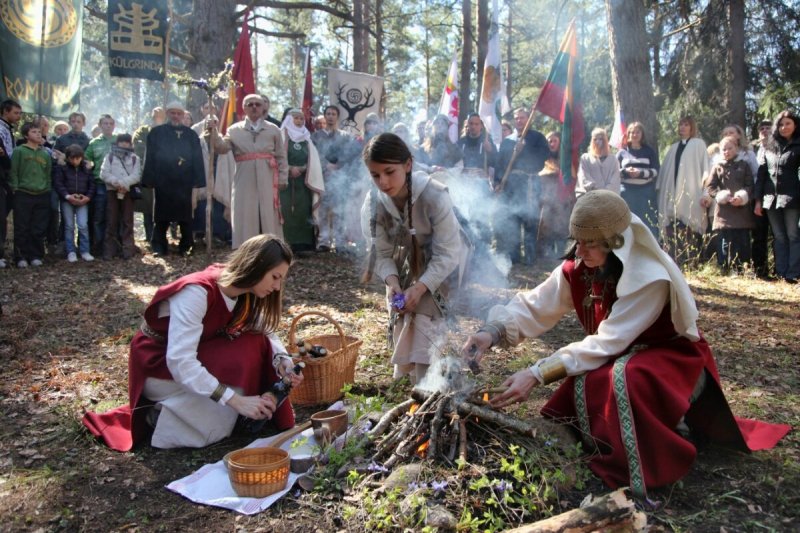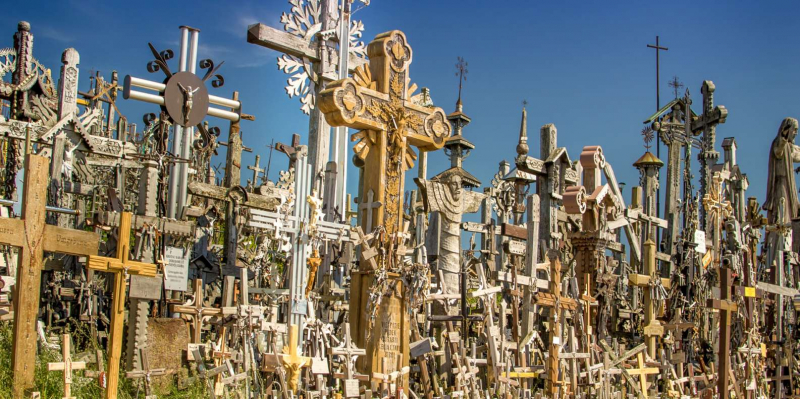Religion
Religion is also one of the Lithuanian culture, customs, and etiquette that you should know before traveling to Lithuania. Along with the ancient religions of Northern and Central Europe (Slavs, Germans, and Celts), the Lithuanian religion represents the realities of Indo-European faiths. It is a member of the Baltic religions and through several connections is tied to Prussian and Lettish religions. Its distinguishing characteristic is a certain social dimension, i.e., neither the Prussians nor the Letts had yet established a sovereign state, with either knighthood or warriors having developed into strong social strata; in contrast, the sources from the 13th and 14th centuries would typically refer to Lithuanian religion in terms of the forms of religion that the warriors and lords would have practiced.
Most Lithuanians have been Roman Catholics since Samogitia and parts of Lithuania proper were Christianized in 1387 and 1413, respectively. 79% of Lithuanians, according to the 2001 census, are Roman Catholics. Eastern Orthodox people make up about 4.9% of the population, primarily Russian immigrants. Individuals in Lithuania are free to follow any religion they choose, as stated in Article 26 of the Constitution. Under the Soviet Union, Catholicism had a significant impact on Lithuanian anti-communist resistance. Even though the Hill of Crosses near iauliai was bulldozed in 1961, hundreds of Latin rite crosses were erected there. A number of Catholic priests served as leaders of the anti-communist demonstrations.












